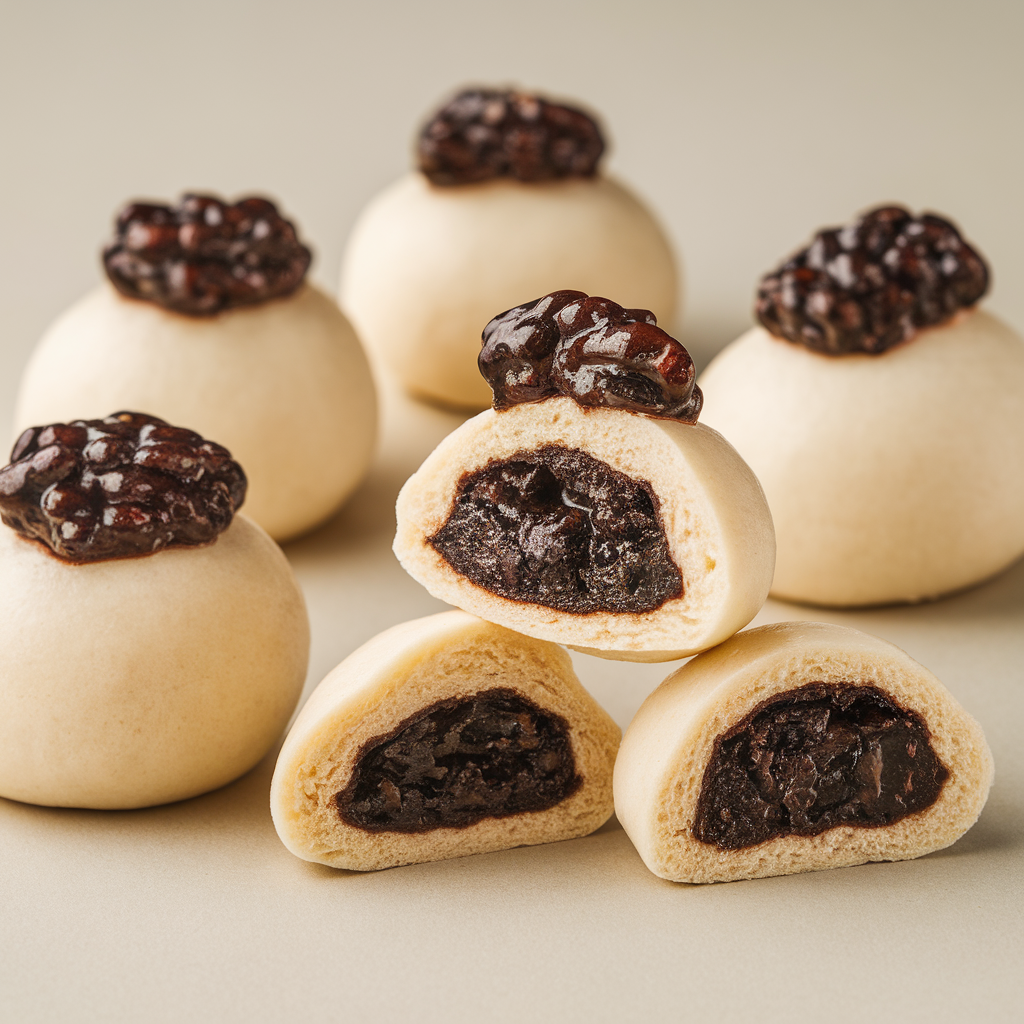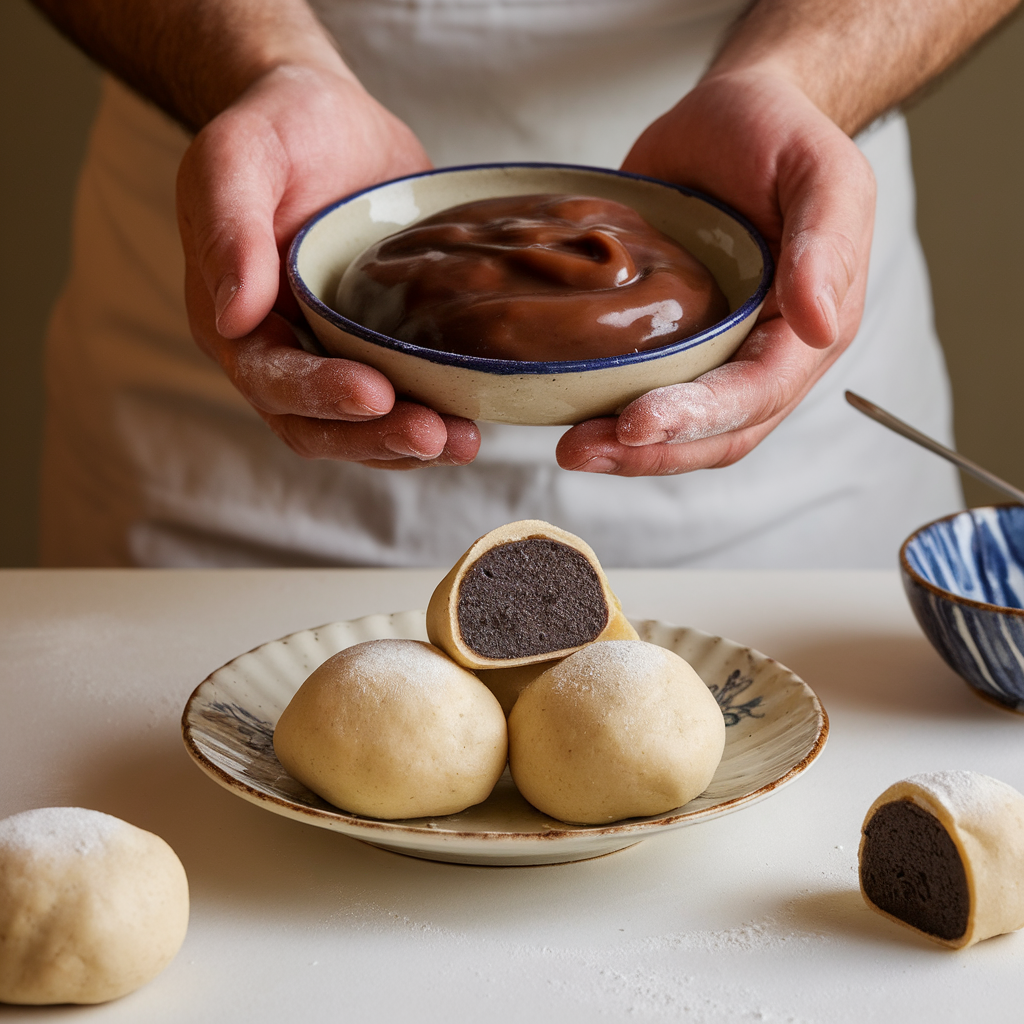
If you’ve ever tasted mochi, dorayaki, taiyaki, or yokan, chances are you’ve enjoyed the velvety richness of Japanese Sweet Red Bean Paste, also known as anko. This traditional ingredient is the heart of many beloved Japanese desserts and snacks, offering a subtly sweet, earthy flavor that’s both satisfying and deeply nostalgic for many.
In this in-depth guide, you’ll learn everything there is to know about this iconic ingredient—from the types of anko and its cultural significance, to a step-by-step red bean paste recipe you can easily make at home. Whether you’re an experienced home cook or a curious beginner, this article will help you master how to make anko and explore exciting ways to use it in your own kitchen.
🌸 What Is Japanese Sweet Red Bean Paste (Anko)?
Anko (餅子) is a sweet paste made primarily from adzuki beans (red beans) and sugar. It is a cornerstone in Asian red bean recipes, especially in Japanese, Chinese, and Korean cuisines. In Japan, it comes in several varieties depending on the texture and preparation method:
- Tsubuan (粒あん) – Chunky red bean paste with whole or partially mashed beans.
- Koshian (こしあん) – Smooth red bean paste that’s been sieved to remove skins for a creamy texture.
- Shiroan (白あん) – Made from white kidney beans, for a lighter color and taste.
This sweet bean paste is used as a filling, topping, or base for countless dishes, adding richness and sweetness without overpowering other flavors.
🍬 Why Is Anko So Popular in Japanese Sweets?
Red bean paste is not overly sugary—it has a gentle, natural sweetness that pairs perfectly with both traditional and modern desserts. It’s used in:
- Dorayaki (pancake sandwich with anko filling)
- Taiyaki (fish-shaped pastries)
- Yokan (a jelly-like bean dessert)
- Anman (steamed buns filled with red bean paste)
- Daifuku and Mochi (glutinous rice cakes)
- Even in some ice cream and drinks!
Anko’s versatility lies in its mild flavor and thick, spreadable consistency. It complements glutinous rice, doughs, jellies, and even dairy products.
Because of its subtle sweetness and rich history, anko remains a treasured part of Japanese cuisine and is enjoyed all year round, especially during festivals and tea ceremonies.

🍽 Ingredients You’ll Need
To make about 2 cups of Japanese sweet red bean paste, gather the following:
- 1 cup dried adzuki beans (found in Asian markets or online)
- 4 cups water (for boiling)
- ¾ to 1 cup sugar (adjust to taste)
- Pinch of salt
Optional: Some recipes include a tablespoon of honey or mirin for added depth.
👩🍳 How To Make Anko (Japanese Sweet Red Bean Paste)
Let’s dive into a step-by-step guide for making homemade anko paste:
Step 1: Rinse and Soak the Beans
Rinse 1 cup of dried adzuki beans under cold water until the water runs clear. This removes excess starch and impurities. Soaking overnight softens the beans and reduces cooking time.
Step 2: Parboil to Remove Bitterness
Place the beans in a pot with enough water to cover them. Bring to a boil and simmer for 5 minutes. Drain and discard the water. This step helps remove any bitter compounds naturally present in adzuki beans.
Step 3: Cook the Beans
Refill the pot with 3-4 cups of fresh water. Simmer the beans on low heat for 45 minutes to 1 hour, until they are tender and easily mashed with your fingers. Add water as needed during cooking to keep the beans submerged.
Step 4: Drain and Sweeten
Once cooked, drain the beans but reserve a small amount of the cooking liquid. Return the beans to the pot, add ¾ cup of sugar (or more depending on your preference), and a pinch of salt. Stir gently and cook over low heat until the sugar dissolves and the mixture thickens.
If it gets too thick, add some reserved cooking liquid to reach your desired consistency.
Step 5: Choose Your Texture
- For tsubuan (chunky): Mash the beans slightly and stop here. You’re done!
- For koshian (smooth): Press the mixture through a fine mesh strainer or cheesecloth, then cook the strained paste again to reduce excess moisture.
❄️ Storage Tips
- Refrigerator: Store in an airtight container for up to 5 days.
- Freezer: Freeze in small batches for up to 2 months. Simply thaw in the fridge before using.
Freezing anko is especially convenient if you like to make traditional desserts regularly.

🍽 Ways to Use Anko in Red Bean Dessert Recipes
Now that you’ve made your own anko paste, here’s how to use it in various traditional and modern red beans dessert recipes:
1. Dorayaki
Soft, fluffy pancakes sandwiched with red bean paste. Think of them as Japanese sweet bean whoopie pies.
Tip: Add a dab of butter or whipped cream for a richer taste.
2. Yokan (Red Bean Jelly)
Yokan is one of the most traditional Japanese desserts, made by combining anko with agar-agar (a vegan gelling agent).
Mini Recipe:
- Combine 1 cup of anko with 1 tsp agar powder and 1 cup water.
- Boil, pour into molds, and chill until set.
3. Anman (Steamed Buns)
These fluffy white buns are filled with anko and steamed to perfection. A beloved winter treat in Japan.
You can make the dough from flour, sugar, yeast, and milk, or buy frozen bun dough to simplify the process.
4. Taiyaki
Fish-shaped pastries stuffed with red bean paste and cooked in a special mold. Crispy on the outside, warm and gooey inside.
You can also use custard, chocolate, or sweet potato fillings, but anko is the most classic choice.
5. Daifuku Mochi
Soft mochi balls with a center of smooth anko. These chewy treats are perfect for tea time or gifting.
Use glutinous rice flour (like mochiko), sugar, and water to make the dough.
6. Red Bean Ice Cream
Swirl anko into vanilla or matcha ice cream for a Japanese twist. You can even make no-churn red bean ice cream by blending sweetened condensed milk, whipped cream, and anko.
📋 Nutritional Benefits of Sweet Beans
While sweet beans may sound like a sugary indulgence, adzuki beans are actually high in:
- Fiber
- Protein
- Iron
- Antioxidants
When paired with minimal sugar, bean paste recipes can offer a guilt-free way to enjoy dessert with added nutrition.

💡 Tips for Perfect Red Bean Paste Every Time
- Don’t overcook: Too much cooking will make the paste overly dry or gummy.
- Control the sweetness: Taste as you go. Some like it sweeter, others prefer the bean’s natural flavor.
- Use quality beans: Old beans won’t cook evenly. Choose fresh, organic adzuki beans if possible.
- Texture matters: Choose between tsubuan and koshian based on your recipe needs.
🌎 Beyond Japan: Anko in Other Cultures
Anko is popular not only in Japan but also throughout Asia:
- In China, it’s used in mooncakes, buns, and rice dumplings.
- In Korea, red bean paste (called pat) is used in bingsu (shaved ice), pancakes, and rice cakes.
- In Vietnam, sweet bean pastes are added to chè, a layered dessert drink.
Wherever it goes, anko paste brings sweetness, comfort, and tradition.
🍰 Creative Anko Dessert Ideas (Fusion Style!)
Want to get creative? Try these fusion-inspired treats using your homemade anko:
- Red Bean Cheesecake: Swirl anko into your cheesecake batter.
- Anko Toast: Spread on toast with butter or cream cheese.
- Red Bean Muffins: Fold into your muffin mix for an earthy, sweet surprise.
- Anko Crêpes: Fill delicate crêpes with anko and fresh fruit.
- Red Bean Brownies: Use anko as a sweet base layer or swirl in for extra moisture.
🍎 The Cultural Symbolism of Anko
In Japan, red beans are often associated with celebration and protection. Anko-filled treats are common at:
- Festivals
- Weddings
- New Year’s celebrations
- Tea ceremonies
Making anko is not just cooking—it’s embracing a cultural tradition passed down through generations.
📌 Final Thoughts
Making your own Japanese sweet red bean paste is more than just a recipe—it’s a journey into one of Asia’s most iconic culinary traditions. Whether you enjoy it smooth or chunky, in buns or jelly, anko is a truly versatile and comforting ingredient that connects food, history, and heritage.
So the next time you’re looking for a unique and authentic dessert to serve, consider incorporating homemade red bean paste. It’s simple, nutritious, and incredibly satisfying.




